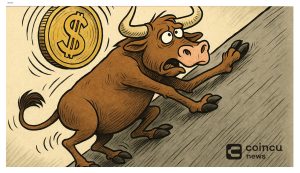- Main event, leadership changes, market impact, financial shifts, or expert insights.
- Mark Zandi anticipates inflation rise mid-2025.
- Tariffs expected to double Fed’s target in 2025.
Moody’s Economist Predicts Ugly Inflation Rise by Mid-2025
Mark Zandi, Chief Economist at Moody’s, forecasted sharp inflation increases in the summer of 2025. The prediction highlights potential risks tied to Trump’s tariff policies impacting consumer prices significantly.
Inflation to Reach 4%, Doubling Fed’s Target
Moody’s economist Mark Zandi has signaled a concerning inflation trajectory for 2025, with expectations of monetary pressure escalating by summer. Trump’s tariff agenda and trade war are central to this outlook. Capital Economics anticipates the Consumer Price Index will hit around 4%, doubling the Federal Reserve’s 2% goal. In the words of Mark Zandi, “I expect that by May—then June, July, the inflation data will look ugly.” (source)
The inflation spikes are poised to reshape consumer behavior as purchasing power diminishes. Interest rates might climb, affecting both real estate markets and overall economic vitality. Price hikes on imported goods, due to tariff enforcement, are predicted to heighten financial strain on consumers by approximately $1,000 annually per low-income household.
Market experts and government statements underline the inflation risk. Consensus suggests policy decisions will have far-reaching impacts, pressuring the Federal Reserve’s monetary strategies. Analyst predictions from Capital Economics extend to GDP growth deceleration, potentially dipping to 1.5% as inflation potentially surges past 4.5%.
Impact on Consumers and Economic Indicators
Did you know?
Historical tariff implementations have imposed significant cost implications, often transferring expenses to consumers, leading to inflationary periods marked by escalated monetary policy constraints from the Federal Reserve.
Bitcoin’s (BTC) recent data from CoinMarketCap shows it trading at $82,187.08, registering a slight daily appreciation of 0.29%. The market dominance stands at 62.69%, while the market capitalization reaches $1.63 trillion. Bitcoin’s price journey reflects a notable 15.77% drop over the past 60 days.

Insights from the Coincu research team suggest emerging financial challenges as inflationary conditions prompt adaptations in monetary policy. Regulatory frameworks may evolve to mitigate impacts, with a probable increase in hedge investments, notably in assets akin to Bitcoin.























